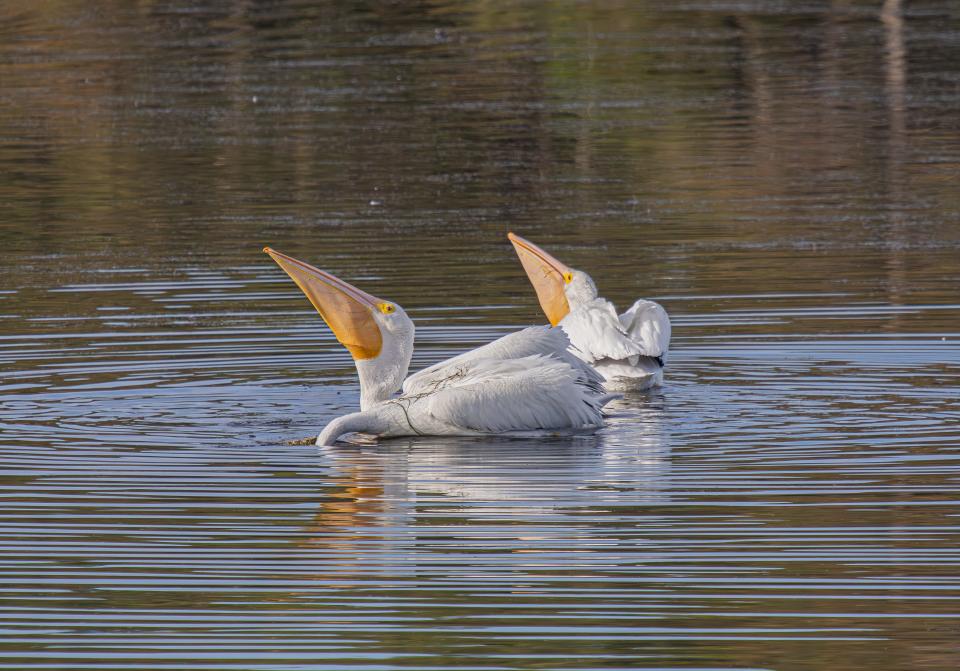How many kinds of pelicans are there? | ECOVIEWS
Q. On a coastal eco-tour in South Carolina, our guide pointed out brown pelicans and white ones. A bird map on the internet shows brown pelicans in the region, but not white pelicans. How many kinds of pelicans are there, where do they live and how do they differ in behavior and geographic range?
A. American white pelicans occur over a vast geographic range including virtually all Western and Midwestern states and far into Canada and Central America.
Maps for the white pelican need to be updated as sightings now occur frequently along the Georgia and South Carolina coasts.
NICK SABAN COMMEMORATIVE BOOK: Relive Nick Saban’s epic Alabama football coaching career with our special book! Preorder here.
Some white pelicans migrate to the Southeast during winter but until recently, east of Louisiana they were found primarily along the Gulf Coast to Florida.
Brown pelicans are common along all Gulf and Atlantic coasts as far as Virginia, with occasional sightings farther north. In the West most of their range is in Mexico, with some populations in California.
The brown and white pelicans are the only two native to North America, but six other species exist, at least one occurring on every other continent except (as always) Antarctica. All of them are large birds with enormous beaks they use to capture fish, which they swallow after letting the water drain from the beak.
Brown pelicans dive from above to catch fish. Others mostly float on the surface and scoop up fish. American white pelicans often work in concert to herd small fish into shallow water for easier pickings.

Both the ecology and the behavior of pelicans vary from one species to another, but all are more similar to each other than to other birds.
Like many animals, pelicans will partake of a meal prepared by someone else, so stealing fish is common. Brown pelicans will follow dolphins, hovering above to catch fish that get stirred up. A reader from Southern California notes that “gulls have learned to follow the pelicans in an attempt to filch food when they dive for fish.”
Andrew Lydeard with Alabama Audubon says, “I sometimes see a gull sitting on the back or head of a floating brown pelican. As the pelican tries to swallow fish, the gull jumps off to get scraps.” The two U.S. pelicans will not win any awards in a birdsong contest. A white pelican sounds like a grunting alligator might be eating a croaking pig frog. A brown pelican sounds like a fight between a yapping mutt and a take-no-prisoners cat.
A surprising fact to many people is that the American white pelican is one of the largest birds in the United States, with a wingspan up to 9 feet. Brown pelicans hold their own among most birds in regard to size, but their wingspans are half that of white pelicans. In the New World, only a California condor can outstretch an American white pelican.

The dalmatian pelican of Eurasia rivals not only all pelicans but also most birds. These monsters can have a wingspan of more than 11 feet. All pelicans are absolutely magnificent to watch in flight, and some are true high-flyers. Dalmatian pelicans have been recorded at altitudes above 10,000 feet.
A flock of pelicans colliding with an airplane is a genuine threat and the consequences can be serious. White pelicans have caused more than a quarter of a billion dollars in damage to aircraft.
Anyone who has watched pelicans soaring above a coastal habitat would agree that they are impressive creatures. But we must not take them for granted.
A statement from the Smithsonian’s National Zoo provides a cautionary note about the widespread use of the pesticide DDT to control mosquitoes and the interconnectedness of the natural world. The use of DDT “had an unintentional effect that almost drove brown pelicans to extinction” by causing “pelican eggshells to be very thin.”
These fish-eating marvels and countless other creatures may disappear if we do not protect our fragile coastal ecosystems from environmental assaults.
Whit Gibbons is professor of zoology and senior biologist at the University of Georgia’s Savannah River Ecology Laboratory. If you have an environmental question or comment, email ecoviews@gmail.com.
This article originally appeared on The Tuscaloosa News: How many kinds of pelicans are there? | ECOVIEWS

